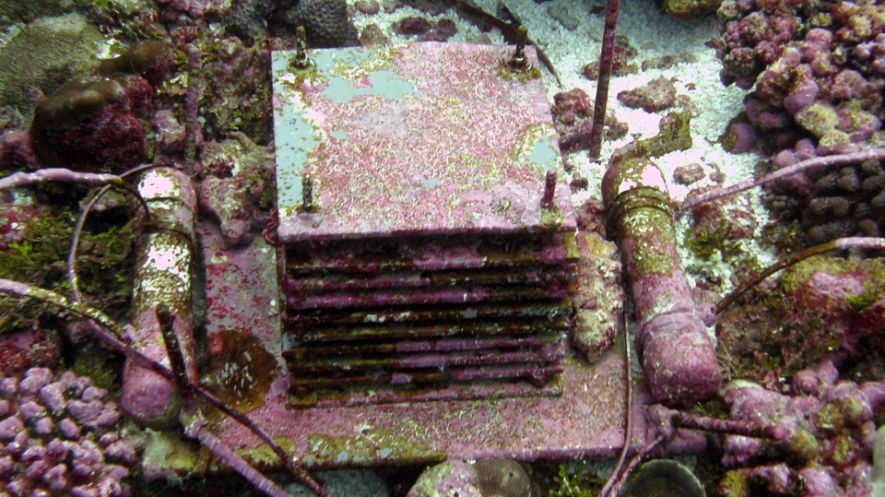In June, NWFSC divers began deploying sets of benthic settling plates in three locations in the southern Salish Sea as part of a NOAA-wide effort to study the ocean’s biodiversity. The Salish Sea is a network of coastal waterways that includes Puget Sound, the Strait of Juan de Fuca, and the San Juan Islands, as well as British Columbia’s Gulf Islands and the Strait of Georgia.
The plates, referred to as autonomous reef monitoring structures (ARMS), were developed at NOAA’s Pacific Islands Fisheries Science Center (PIFSC) in Hawaii, and consist of a stack of 9 openly-spaced 22cm x 22cm PVC plates. These plates are small collecting devices that are designed to mimic the structural complexity of a coral reef and attract colonizing invertebrates.
To date, over 800 ARMS have been installed worldwide, but primarily in tropical waters. The ARMS set by NWFSC scientists are the first to be deployed in the waters off the Northwest coast of North America.
“This is an important step in the program, to deploy ARMS in temperate waters, in the Salish Sea,” said Dr. Rusty Brainard, program lead from NOAA’s PIFSC.
The ARMS are attached to the sea bottom at about 40 feet below mean low water. In one to two years, after the plates become colonized with marine organisms, NWFSC scientists will retrieve the plates to photo-document and identify the visible community using standard taxonomic methods.
In addition, scientists in NWFSC’s Genetics and Evolution Program will conduct a genomic analysis of DNA that is extracted from the ARMS (e.g., from the biofilm) to describe the taxonomy of the invisible “cryptofaunal” community, the understudied but ecologically important invertebrate, algal, and microbial species, such as shrimps, crabs, worms, snails, and hermit crabs. Using DNA-sequencing technology, this will provide “…a unique opportunity to learn about critter-associated microbiomes, too,” said Linda Rhodes, NWFSC microbiologist.
These new baseline data will be used to understand and monitor the visible, cryptobiotic, and microbial communities of the benthos in a systematic method that is being used by NOAA in a existing worldwide survey.
Merging traditional taxonomy with DNA-based metagenomics information will advance our understanding of the biodiversity and resiliency of the Salish Sea ecosystem, as well as provide a benchmark against which to evaluate the rapid changes our oceans are undergoing.
The ARMS research at the Center is led by Drs. Gary Winans and Linda Park. The deployment at the northern ARMS site is being conducted in cooperation with Shannon Point Marine Center, Western Washington University.



